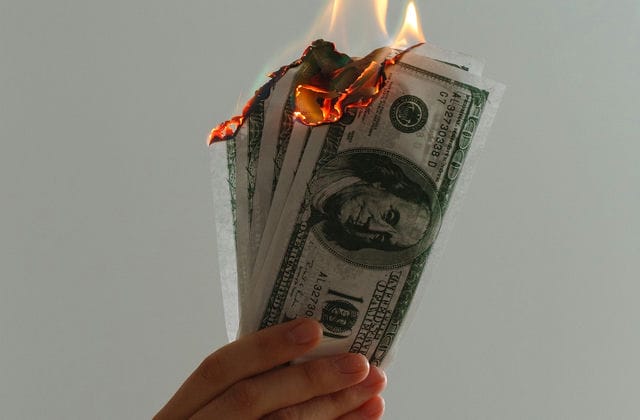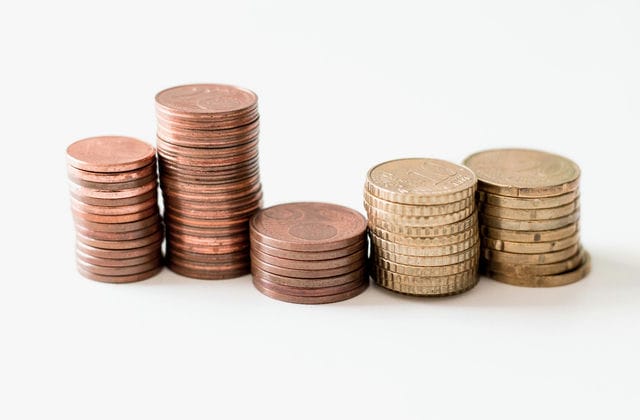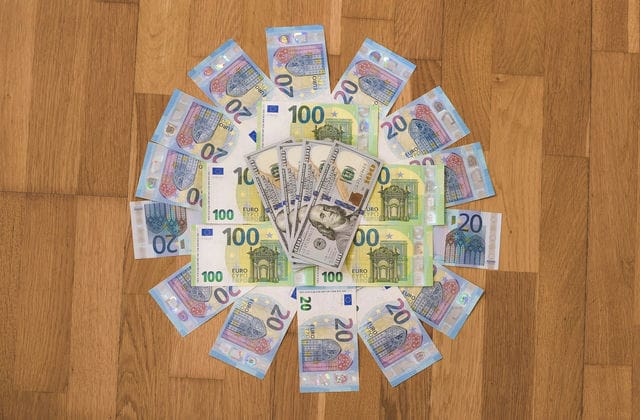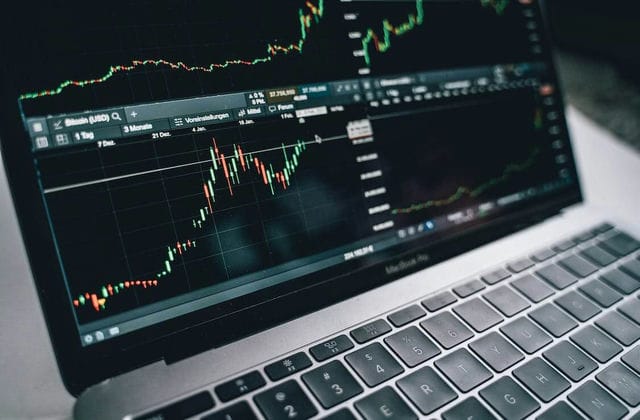The primary retailer, bold, only want to make money, regardless of the risk, relatively speaking, should pay more attention to the selection of shares. Only if you choose a good stock, buy the right stock, you can talk about making money. So, how do beginner retail investors choose stocks? Too much theory, too much data for retail investors to remember, and probably too lazy to remember. So, I'm here with an easy to understand approach to analyze it.
1, look at the general market
The market is good or bad, directly affecting the rise or fall of individual shares, the selection of shares must look at the face of the market.
When the market is good, is a stock selection ideas, when the market is bad, and a stock selection ideas.
The general market is wildly up, choose what shares, are correct; the general market is wildly down, choose what shares are difficult to escape the risk, this time can do is to stop the selection of shares, stop buying shares.
When the general market is good, you have to choose slow hot stocks, because it has space and can give you enough points; when the general market is bad, you have to choose hot fast stocks, because the strongest show off.
The general market opened flat, low, and high, and the idea of selecting the shares is different. The big market flat open, low open, to choose the strong than the big market stocks; big market high open, it is necessary to choose the weak than the big market stocks, many good stocks always pull up in unobtrusive. The opening roar, either straight to the stop, or pull up and ship. Such thinking, of course, is based on the "T+1" Rule and derived.
Of course, the market is not to our will for the transfer, because of this, we can only appropriate to see its face to choose shares, if all look at the market face to act, then only to say goodbye to the stock market. Therefore, the wise man is always, the weight of individual shares, light of the general market.

2, Look at the k-line
The k-line is a reproduction of a stock's previous rise or fall. From the k-line, we can see the growth trajectory of the stock we are going to choose, and these trajectories can help us foresee the subsequent direction.
There are several steps in reading the k-line.
1, Through the k-line to understand what kind of state the stock was in (stable, starting, pulling up, pan head, down, on the way down). We will find that in the process of stabilization to the head of the plate, each intervention will not be set, or set the next day, the third day will soon be unsettled.
2, Through the k line, understand the characteristics of the stock. Do not choose stocks that are not active. Do not choose stocks that do not have enough attention. People often say "Strong banker stocks, bull stocks, demon stocks", as long as carefully examine the k line, are not difficult to find. Some stocks will reveal very obvious traces, such as this period of time and the previous period of the trend of basic coincidence, up and down the basic degree of the same. Some stocks are always on the crest of a wave, and some are always up and down.
3, Then, what kind of k line is the best? In summary, there are only three kinds.
A. Staircase shape. Columns are staircase plate, one after another arrangement, posture showing a 45-degree angle steep upward (such as the front of the Desai battery).
B, Cross upward attack type. Pillar sometimes high and sometimes low, up a day, down a day, but the overall upward, looking back, found that the stock price rose a lot (such as the front Hongqiao steel structure).
C. "U" Shape. Column arrangement compact, showing a beautiful upward arc, the share price rose gently (such as the front of the large yuan shares, China Bao-an)
The k-line can be seen as good or bad with the naked eye. A good k-line always gives people a comfortable feeling. But remember, the k-line is always changing, today you see it is good, but the next day once the stock price changes, the k-line will also change, sometimes the change is huge. In addition, be wary of the dealer in deliberately creating a beautiful k-line, "To lure the king into the jar".
3, Look at the MA (moving average)
The MA, in fact, are included in the K-line system and are singled out because they are very important. Usually, the system gives us set averages of 5 days, 10 days, 20 days, 30 days, 60 days, 120 days, such settings, in the bear market has been enough to deal with the needs of the selection of real trading stocks.
It is said that the average line itself is not able to influence the share price, but many people believe that the share price has hit a certain average line, the rise will have pressure, the average line has therefore become the "Magic line" To suppress the share price, just like "Originally there is no road, walk more people, then there is a road". Therefore, when the share price touches an average line, or to draw attention to.
The space between the two MA is often the space for the stock to grow.
The 5-day MA, is the most important MA, especially in a weak market. A stock that cannot even break through the 5-day MA is certainly not a bull stock. Stocks that stand on the 5-day MA are relatively less risky than stocks that are far from the 5-day MA. Conversely, stocks whose price has just touched the 5-day MA, or is very close to it (one or two cents), generally have a chance to rise (this is particularly important, as there are many such opportunities in bear markets. Paying attention at this time will yield good gains).
In books, the above behavior is usually described as the 5-day MA crossing the 10 MA. In fact, a stock that starts with a bar that clings to the 5-day MA upwards every day, what with the 10-day MA, 20-day MA and 30-day MA, is left behind early and need not be considered. If you want to consider, it is the average line pressure, rather than up or not up.
In summary, the 5-day average is the lifeline of the stock!
4, Look at the wave pattern
The so-called wave pattern, is the time, average, volume of the integrated, in order to simple to remember, we simplify for the "White line (time) yellow line (average)" Theory. As a junior retailer, do not know too much, look at the plate, we just need to remember the two lines of running trend, and pay due attention to the following volume, it is enough to deal with stock selection and even buying and selling behavior.
1, The white line above the yellow line, in an uplifting posture upward, the emergence of multiple spikes. Early encounter, resolutely involved. Already hold, resolutely hold. Afternoon encounter, you can also choose to enter (the best wave type)
2, The white line is mostly above the yellow line, in a calm posture slightly up, and very close to the yellow line. Such a wave type, contains opportunities, if the afternoon before 1:00 still appear similar wave type, the stock after 2:00 is very likely to go straight to Zhang stop and (the second-best wave type)
3, The white line is mostly below the yellow line and running calmly (sometimes also occasionally through the yellow line), but very close to the yellow line. Such a wave type, also contains opportunities, a white line found on the yellow line, the volume increased sharply (white line yellow line below the vertical line), can also be firmly involved. (Second time good wave type)
4, The white line to the yellow line as the axis, up and down. Such a wave pattern, indicating that the stock more and less fierce warfare, or dealer washing intentions obvious. Such a stock is suitable for T+0, pay as little attention as possible. Of course, if you want to buy, you can choose the lowest level of intervention (general waveform)
5, The white line under the yellow line, running in a downward posture, the newly formed spike is always shorter than the previous one. Such a wave pattern shows that the multiple parties are unable to fight back. A stock with such a wave pattern should never be selected (a very bad wave pattern)
About the yellow line and the white line, there are a few points worth emphasizing, one is the distance between the two lines, the second is the white line on the formation of the tip, the third is the posture of the white line, the fourth is the yellow line and the "0" Axis of the distance, are worth looking into.

5, Look at the volume ratio
Volume than a stock's foundation, no volume on no price. Select stocks, must look at the volume ratio. Different stages of the volume ratio, there are different meanings.
Volume ratio on 1, the stock began to be active, the emergence of opportunities.
Opening, volume ratio 8 to 15, and the stock at the bottom or the early stage of pull-up, the stock trend that day is pleasing.
Seal up the stock, the volume ratio is small, showing that the selling pressure is small, the future trend can be expected.
After the stock rises, the volume ratio is 1 to 4, indicating a normal trend.
The opening volume ratio is huge, indicating that there are many people who are bullish on this stock. The stock may stop on the day, but the adjustment will come soon. Sometimes, a stock will open on dozens, or even hundreds, of volumes. If you come across such a stock, the first day to buy as much as you want to hurry to win out, the same day want to buy, please press the idea.
The volume ratio is moderate, is the characteristics of bull stocks, mild release, the upward trend can continue.
The volume ratio at the opening is an important part of the day's stock selection. Of course, the volume ratio has to be seen in conjunction with the turnover rate. The turnover rate and the volume ratio are very related.
6, Look at the KDJ value (MACD, etc.)
This is a very complicated thing, as a retailer, there is no need to know that much. It is recommended that you only look at the k value. K value below 30, the short side is stronger than the multiple, caution, k value 30 to 60, safe zone. K value on 80, the risk will come, operation carefully.
7, look at the plate
The stock has a linkage, choose the stock does not look at the plate, is a big taboo. The plate can be found by the amount of money on the first day, but also through the bidding, opening or trading process to find. A stock that has risen sharply often has the nerve of a sector behind it. For example, through Vanke can find signs of the rise and fall of real estate, through the Fudan, you can understand the wind direction of venture capital.
1, Find strong sectors by checking capital in and out.
2, Finding strong sectors through policy and news interpretation.
3, Through the plate rotation law to find the strong plate.
4, Through the intraday (bidding, opening, midway) of individual stocks to find the strong plate.

8, Look at the fundamentals
Research equity, liquidity, pay attention to the turnover rate.
Main tracking, shareholder research, company fundamentals, relevant news. These cannot be ignored, sometimes, a bad performance stocks will suddenly stop, but such a stop is often a trap.
9, Look at the rise and fall
No old up not down, old down not up stocks. Stock selection, must pay attention to see the rise and fall.
General stocks up 15%, it rested; good stocks up 30% into the adjustment; special cattle stocks up 45% or so curtain. This is the basic rule, like a woman's menstrual cycle.
10, Look at the transaction details
The geese have left their voices, the main force increased positions, institutions run, no matter how hidden, will always leave traces. Before choosing a stock, be sure to look at the first day's transaction details.
For example, why is the main force knocking.
For example, how many large buy orders (if it is a small-cap stock, the transaction found soon after the emergence of more than a hundred hands buy orders, indicating that the main force in quietly increase positions).
For example, when the dealer shuffles, the white line below the yellow line whether there is a dense transaction area.
From the transaction details, we will find that the morning jerked up the stock, the opening of a lot of large single. And the afternoon suddenly pulls up the stock, the opening, buying and selling single not much, showing "Here inside the quiet" State, the so-called "Real people do not show their faces". So, look at the transaction details, the most important opening, the second most important, again to the end of the plate.




























